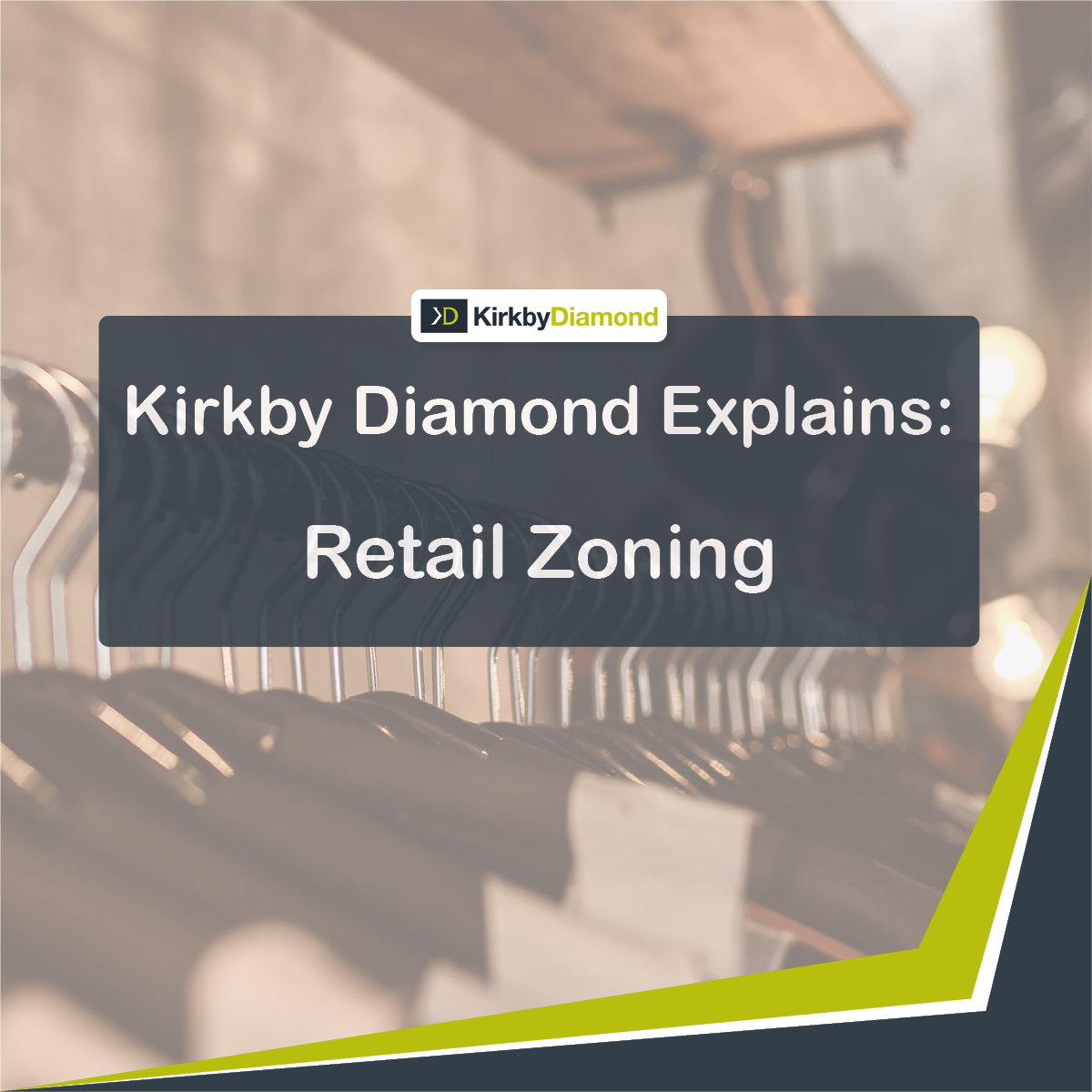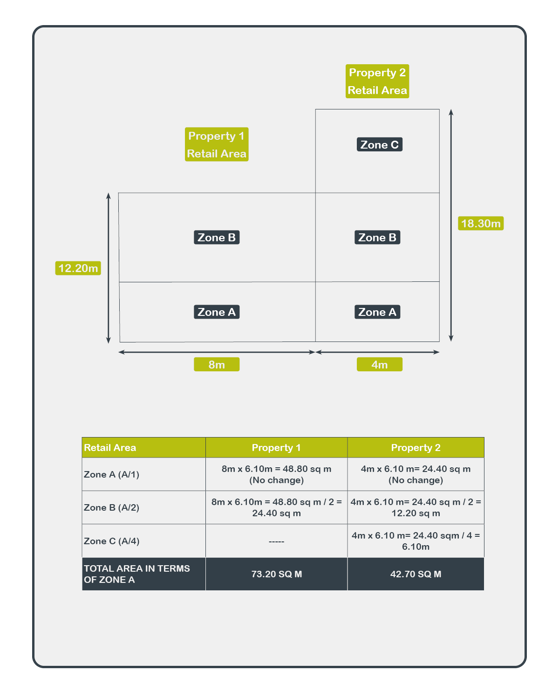
Time to get in the Zone (A)
September 20, 2021
Adam Smylie, Head of Valuation at Kirkby Diamond explores the Zoning technique and what impact it has on retail rents.
Shops along a high street come in a range of sizes and shapes. There are small rectangular shops that are narrow and deep and others have a wide frontage but a shallow retail area. These two different shops have very different characteristics and therefore we need to find a way to derive a comparable basis of rent from them.
So what is zoning?
The zoning technique is used in rating valuations and in most retail valuations. Essentially it assumes that the first 6.10 metres (20 feet) of retail space in a shop is the most valuable, as this is the part of the shop that passers by can see through the shop front. Thereafter every successive depth of 6.10m halves in value as it is less visible to passers by. All these figures are added together to arrive at the retail area “In Terms of Zone A.”.
Surveyors calculate these areas by taking measurements on site, which are underpinned by the Net Internal Area method of measurement set out in the Royal institution of Chartered Surveyors (RICS) guidance.
Simple worked examples of two different sizes of retail properties next door to one another are shown below:

So what does this mean for rent?
In simple terms, Property one with the wide frontage has a more valuable retail area than the narrower shop. As retail areas are now compared on a “like for like” basis, this will then enable us to calculate a rental value based on these areas. We now need to search for evidence of other lettings also known as comparable evidence.
Having found our evidence of lettings in an area and devalued the rents on a zone A basis, we can calculate our rents. Assuming that a standard retail rent in this area derived from comparables is say £250 per sq m in terms of zone A, and each property would not have any ancillary parts e.g. offices, the rents are set out below.
property one - £250 per sq m x 73.20 sq m In Terms of Zone A = say £18,300 per annum
property two : £250 per sq m x 42.70 sq m In Terms of Zone A = say £10,675 per annum
As you can see, for two shops next door to one another, there is a big difference in rent, but all calculated off the same methodology.
What about ancillary space?
Parts of a retail property including first floor space, offices and kitchenettes are discounted at rates using the valuer's skill and experience. They are not as valuable as the main retail area and typically have lower values per sq m attached to them.
Why does all this matter?
The zoning technique is necessary to ensure that rents are calculated in a consistent manner. Where this is done across multiple properties in an area, this can show a rental tone, which can used for upcoming lettings, lease renewals and rent reviews at a property. The zoning technique also ensures that retailers are charged consistent business rates in an area.
Adam Smylie comments: “The zoning technique is critical to the valuation of retail property and is often one of the first things valuers learn about. As it is a technique and not a valuation method, its application is not necessary in every circumstance, however for the vast majority of cases it is. The technique allows us to draw consistent conclusions on rents on a wide variety of shops in a certain area, to calculate a market rent for the unit we are valuing. Whilst some shops can be difficult to measure, zoning them is vital to derive an accurate valuation. From a rental perspective a small change in zone A rents can mean a big difference in rental value depending on how big the shop is. It is important that this is calculated correctly, as this can mean landlords can seek to increase rents or alternatively tenants could be paying too much if Zone A rents have reduced in an area.”
-----------------
For more information on how the zoning technique can impact on your valuation or alternatively for guidance on landlord and tenant matters please visit https://www.kirkbydiamond.co.uk/our-services/lease-advisory/ or email info@kirkbydiamond.co.uk
